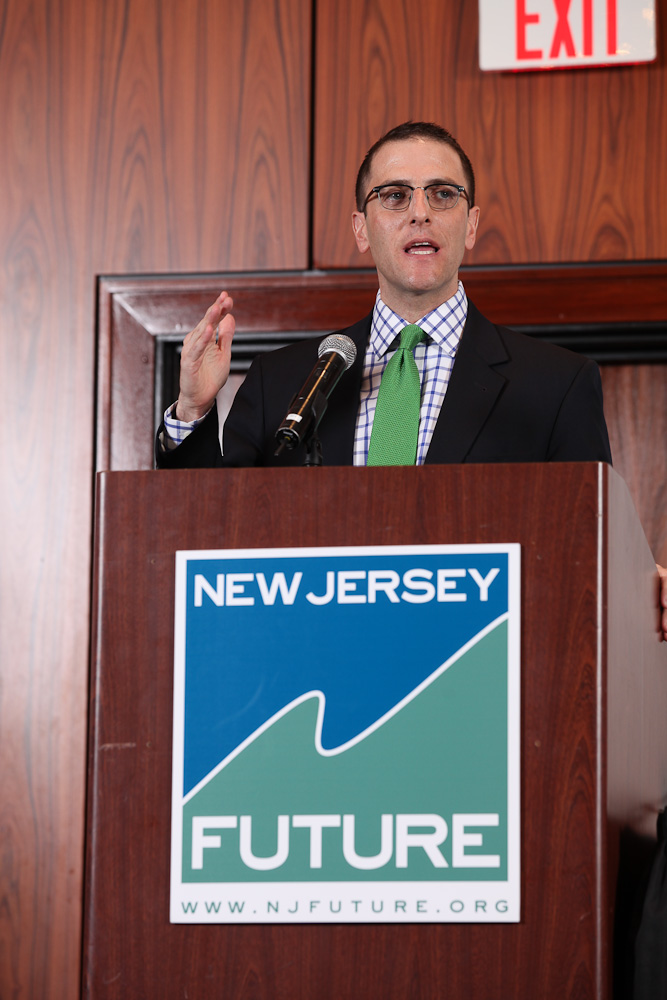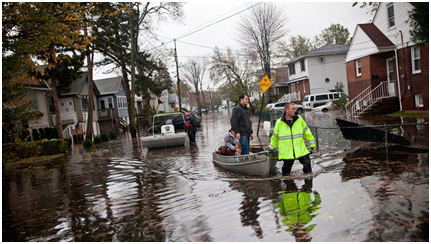New Jersey Future Blog
Redevelopment Offers Antidote to Sprawl
March 4th, 2009 by New Jersey Future staff
- New Jersey is the most developed state in the country, according to the 2003 National Resources Inventory. The Garden State stands to be the first in the nation to run up against the issue of not having any buildable land left.
- Researchers at Rutgers and Rowan universities estimate that 31 percent of New Jersey’s land area is already developed and another 40 percent is permanently preserved or environmentally constrained. This leaves only 29 percent of the state’s land area still available for development.
- Between 1995 and 2002, the population of the state’s 20 fastest-growing municipalities increased by 47.9 percent, but their number of developed acres increased by only 24.2 percent—an encouraging sign. Over the same period, however, as the statewide population grew by 5.9 percent, developed acres increased by 7.9 percent. And about 40 percent of this development occurred outside of areas designated for growth by the State Development and Redevelopment Plan.
Environmentalists, Developers Challenged to Join in Supporting Redevelopment
Delivering the keynote at New Jersey Future’s fourth annual Redevelopment Forum, smart-growth advocate Robert Liberty did not mince words:
“Redevelopment must become the dominant form of development in the United States over the next decade,” he declared. To back up this assertion, the former executive director of 1,000 Friends of Oregon and current councilor on the Portland Metro Council drew on Oregon’s positive experience in revising its land-use laws to promote redevelopment.
In the 1970s, Oregon’s largest city, Portland, suffered from many of the same problems facing other urban centers: declining population, suburban sprawl, water pollution, poor air quality and heightened racial tensions. In response to these conditions, the Oregon Legislature adopted a set of laws and goals mandating that all cities establish Urban Growth Boundaries (UGBs). Every city was required to rezone for apartments and high-density housing within these boundaries, and growth was severely curtailed elsewhere.
Since then, Mr. Liberty reported, more than 90 percent of Portland’s growth has taken place inside its UGB. Between 1990 and 2000, transit use in Portland increased 24 percent faster than vehicle miles traveled (VMT) and 59 percent faster than population growth. And while property values and housing prices have declined precipitously in other metropolitan areas in recent months, they have remained relatively stable in Portland.
To spread the Oregon success story to New Jersey and the nation, Mr. Liberty issued a challenge to environmentalists and developers: join forces to stop suburban sprawl and promote revitalization of urban areas. “Environmentalists need to actively support densification and redevelopment,” he declared.
New Jersey Future Executive Director Peter Kasabach struck a similar theme in his remarks opening the Redevelopment Forum. “Sprawl remains the path of least resistance” for many developers and municipal officials, he noted, “yet it pits environmental concerns against development concerns … in a wasteful and unnecessary tug of war between two factions that have more in common at the end of the day than differences.”
He encouraged the environmental and development communities to come together to help launch a common-ground land-use agenda for the 2009 gubernatorial election. In addition, Mr. Kasabach urged state officials to put federal stimulus dollars toward projects that would promote sustainable growth; adopt greenhouse gas emission-reduction strategies that recognize the need to change land-use patterns; provide incentives to build housing for working families; and initiate and/or expand programs, such as Revenue Allocation Districts (RADs) and Urban Transit Hub Credits, that promote redevelopment.
Featured luncheon speaker Joseph V. Doria Jr., commissioner of the state Department of Community Affairs, urged the nearly 600 forum attendees to “work together toward sustainable smart-growth communities.” He also suggested that New Jersey may be well-positioned to follow Oregon’s example. “Construction permits are increasing in urban areas,” he reported, “and decreasing in rural areas where infrastructure doesn’t exist.” New Jerseyans have come to realize “sprawl is not the answer,” he said. “We need to go back and redevelop where there is infrastructure, transportation and jobs.”
If you have any questions about this issue of Future Facts, contact Rick Sinding (rsinding njfuture
njfuture org) , Senior Communications Consultant.
org) , Senior Communications Consultant.
















